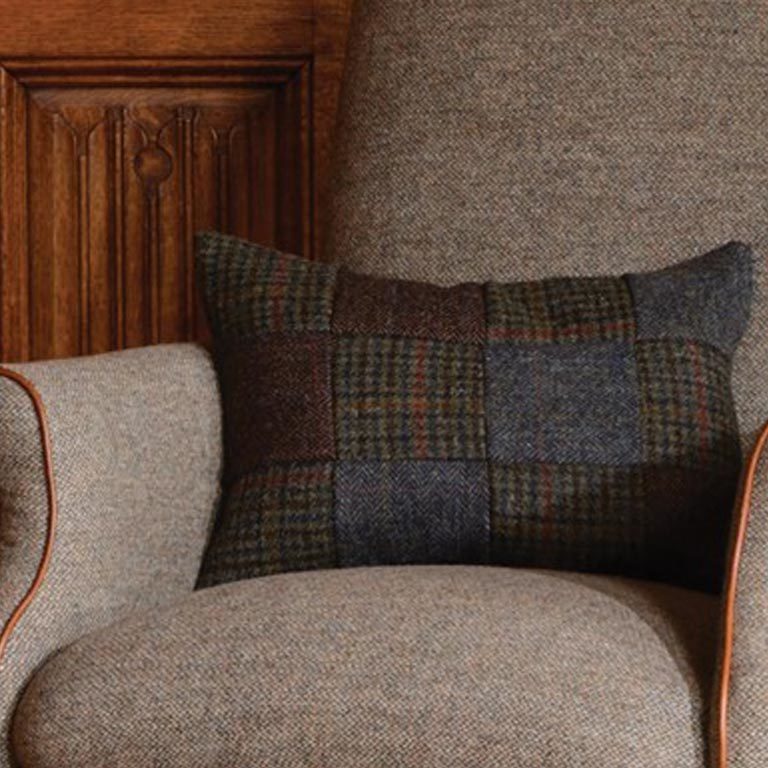For most people the idea of tweed is linked with the inimitable Miss Marple’s country crime solving attire or crusty old men out on the moors with their handle bar moustaches and gun dogs.
Actually it is a brilliant flexible fabric design so varied and versatile and suitable for almost any interior design project.
In terms of upholstery usage the choice is endless. You can go old school and stick to the traditional patterns of the Western isles – the herringbone, the hound’s tooth and the plaid. This can look amazing in the country kitchen on a bench seat or in blinds. Ralph Lauren has used this style very effectively in his East Coast collections and designs.
In curtain fabric, these patterns can be found in the Ashbourne tweed collection by Thibaut. Here there are 15 choices of colour. Each earthy tone keeps true to the muted palette associated with this design. It is a tight herringbone and will fit in with nearly all schemes you may choose. If you want a more lively look, Designers Guild do a selection called Cheviot tweed in three colours including a vibrant green. This has a more distinct check pattern and is a bolder approach to the traditional look.
A more sophisticated tweed will be found at Lelievre where three threads have been woven together to give a fine and delicate edge to the cloth. It is a beautiful fluid fabric and drapes well as curtains. It is smooth and does not have the roughness of the earlier weaves.
Hooked on walls, use a tweed design as textured wallpaper. The grain adds texture to a room but is not as dominating as a strong pattern or as flat as paint can be. This comes in seven shades.
If you just want a touch of this look in your room, there are many companies selling throws and cushions to decorate your home. The aptly named Harris Tweed shop has many cushions as does the National Trust shop.
For just a touch of homespun go for this fabric and you won’t be disappointed.

